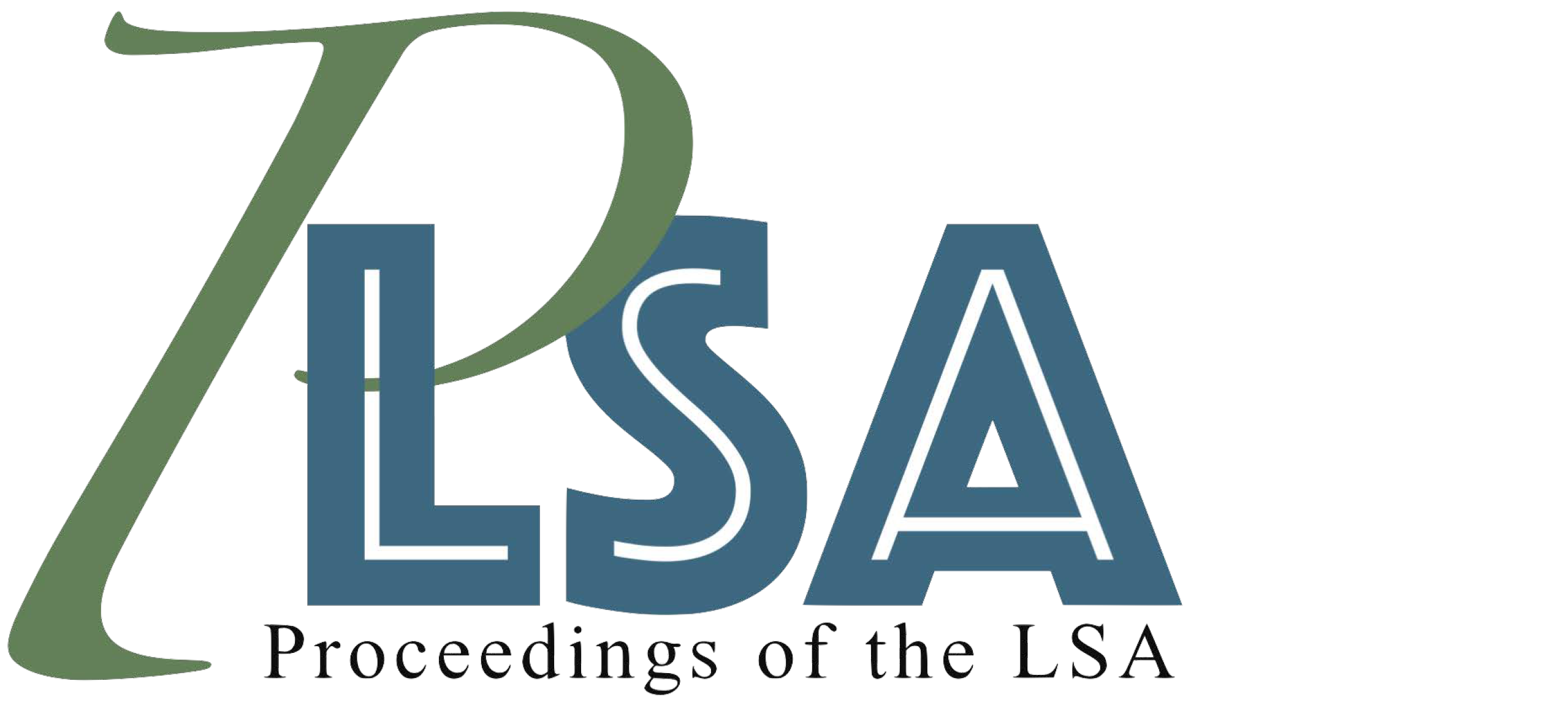The pragmatics of propositional anaphora in English
DOI:
https://doi.org/10.3765/plsa.v10i1.5900Keywords:
propositional anaphora, pronouns, attitude predicates, doxastic background, sources, subjectivityAbstract
English employs a variety of devices to refer back to propositions, including demonstratives, the null complement anaphor, the pronominal it and the proform so. The last of these shows a relatively limited distribution. The relative distribution of it and so has been the subject of much inquiry. In this paper, I examine their differences in responses to polar questions, in response to assertions and in the context of anaphora to embedded propositions. I make the novel observation that believe with an overt source argument tracks with it and not so in these contexts. This observation inspires a novel approach to restricted distribution of so and its characteristic effect on interpretation. The notion of a sourced doxastic background is introduced as the basis of the semantics for doxastic attitude predicates. This new notion allows evidential distinctions between predicates to be encoded.
Downloads
Published
Issue
Section
License
Copyright (c) 2025 Jon Gajewski

This work is licensed under a Creative Commons Attribution 4.0 International License.
Published by the LSA with permission of the author(s) under a CC BY 4.0 license.
